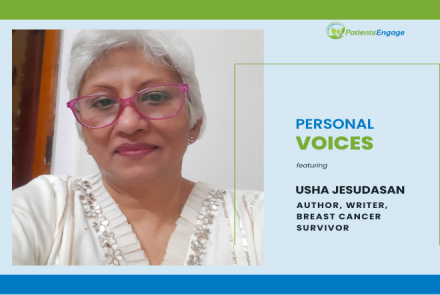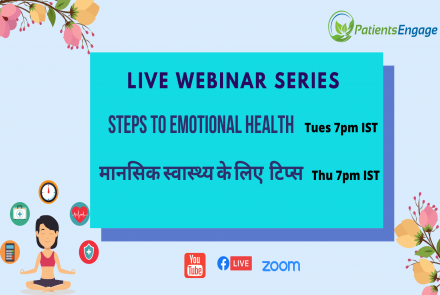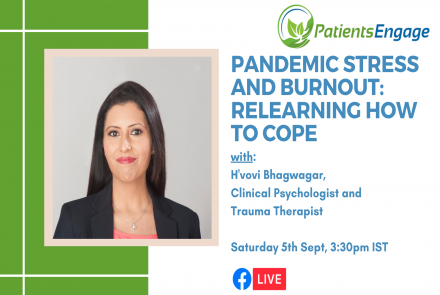
Mumbai-based psychotherapist H'vovi Bhagwagar explains panic attacks, signs and symptoms, triggers for panic attacks and tips on coping with panic attacks.
“Courage is knowing what not to fear”-Plato.
Imagine the 2 scenes. A fire fighter enters a building on a rescue mission, where a family is stuck on the 15th floor. The smoke is thick and penetrates his protective gear almost choking him. He thinks “I am going to die, what will happen to my family”. He moves into action, breathing in a manner he has been trained to, avoiding the toxic air as much as possible. His mind calculates moving to a spot where the smoke is less dense, and he lunges there. Safe now, his trembling legs feel weak beneath him as his body comes back to normal and he plans the next step ahead.
The manager of a large multinational bank is returning home in an uber. She has been feeling tense all day, and now all of a sudden she feels weak, dizzy, her heart pounds and she feels nauseous. She thinks “I’m stuck, I can’t get out! There’s traffic on both sides”. Fear and apprehension grip her for a few minutes that seem endless and nearly unendurable. Gradually, the panic disappears and she feels weak, drained and bewildered. Left with no answers for these frightening body signs, she fears when they will happen again.
Notice the similarities between the two scenarios. Both illustrate the working of the built-in “alarm system” which equips human beings to cope rapidly with danger. However, there are important differences between the fire-fighter and manager. The fireman knows what triggered his reaction, while the manager has no clue about the reason for her symptoms. She will have trouble believing that such physiological and “real” sensations can be “just anxiety”. In the case of panic attacks, our in-built alarm system sets off in the absence of real danger, just like a smoke detector going off when someone lights a candle.
Another way the manager and fireman differ are the way they interpret these body sensations. To the fireman, a pounding heart and other sensations are simply signals to attend to danger but are not dangerous in themselves. In contrast, the manager interprets her sensations as extremely dangerous especially because there is no external danger. And herein lies the key to coping with panic attacks. Once the person recognises them to be a severe form of anxiety that produces no worse symptoms than those that the panic attack itself brought on, the fright and terror would not be so overpowering. Also, when people realize that during a panic attack one needs to do nothing to reduce the symptoms and that the body’s regulatory mechanisms would reduce them in a short period of time, panic attacks seem less daunting and scary.
Recognising Panic attacks:
According to the Diagnostic and Statistical Manual of Mental (DSM-5) panic attacks are an abrupt surge of intense fear or discomfort that reaches a peak within minutes and during which time four (or more) of the following symptoms occur: palpitations, pounding heart or accelerated heart rate, sweating, trembling or shaking, sensations of shortness of breath, or smothering and a feeling of choking. Other symptoms include chest pain or discomfort, nausea or abdominal distress, light-headedness, or faint chills or heat sensations, paraesthesias (numbness or tingling sensations), derealization (feelings of unreality) or depersonalization (being detached from oneself), fear of losing control or going crazy, and fear of dying. Panic attacks can be both expected (with an obvious cue and occur in specific situations) and unexpected (occur out of the blue).
How do panic attacks begin?
People who experience panic attacks usually have some background stress that acts as a trigger. In my experience as a therapist, these triggers could range from health worries, illness of a family member, arguments with a spouse, an abandonment of some kind etc. Most times these triggers are reminders of childhood adverse experiences that laid the foundation of the person’s anxiety and panic. When learning coping strategies for panic attacks it is extremely important for people to work on these stressful experiences.
Coping with panic attacks:
The good news is that panic attacks are very treatable. The manager, in the beginning of this article, could learn many skills that can help her calm down during a panic attack or prevent an attack from becoming severe.
Controlled breathing: Breathing too fast, deeply or irregularly can lead to more symptoms of panic, such as faintness, tingling and dizziness. Breathing calmly and slowly for at least three minutes can stop the bodily alarm system. However, in the middle of a panic attack, focusing on breathing can be difficult. This technique will only work if you have practiced and if it is used for at least three minutes.
Remember: even if you didn’t control your breathing, nothing awful is going to happen.
Grounding: Panic attacks create feelings of depersonalization (as if you have moved away from your body) and derealization (surroundings appearing different or strange). Using your 5 senses-such as sounds you can hear around you or things you can touch- will help you reduce these sensations.
Distraction: Focussing attention away is useful-such as listening to what someone is saying or imaging a pleasant scene, doing sums in your mind or singing a song. The important thing is that your attention is taken off your body and on to something else.
Question your thoughts: In the long run, it is most helpful to challenge your worrying thoughts, so that you no longer believe them.
- What is the evidence for and against them?
- How many times have you had these thoughts and has your worst fear ever happened?
- Do your experiences fit more with panic or with something more serious?
Here are some alternatives you can adopt:
| Unhelpful/unrealistic thoughts | More realistic thoughts |
|---|---|
| I am having a heart attack | I have had this feeling many times and am still here |
| I am going to faint | People having panic attacks are unlikely to faint. I have not fainted before. |
| I will make a fool of myself | I have panicked before and no one has even noticed. People are busy doing their own thing. |
Eliminate safety behaviours: Safety behaviours are strategies that people engage to avoid having a panic attack or to escape an uncomfortable situation. While this makes sense in the short run, it usually becomes maladaptive in the long run as it prolongs the anxiety and the fear of non-threatening situations.
|
Safety behaviour and purpose |
What you can do instead | What did you learn? |
|---|---|---|
| Lie down when panic comes on to prevent heart attack. | Run up and down stairs | I did not have a heart attack even though I ran up and down the stairs |
| Lean on shopping trolley to prevent fainting | Walk without trolley, use basket instead | I did not faint even without the trolley |

H'vovi Bhagwagar is a psychotherapist at “MANASHNI” in Powai, Mumbai who works with adults, children and teens diagnosed with mental health issues. She spreads awareness about mental health through her articles and blog
References:
- American Psychiatric Association. (2013). Diagnostic and statistical manual of mental disorders (5th ed.). Arlington, VA: Author
- Beck, A. T. (1976). Cognitive therapy of the emotional disorders. New York, NY: New American Library.
- Beck, A. T. (1988). Cognitive approaches to panic disorder: Theory and therapy. In S. Rachman & J. Maser (Eds.), Panic: Psychological perspectives (pp. 91–109). Hillsdale, NJ: Lawrence Erlbaum Associates.
- Clark, D. M. (1986). A cognitive approach to panic. Behaviour Research and Therapy, 24 (4), 461– 470. doi:10.1016/0005-7967(86)90011-2















